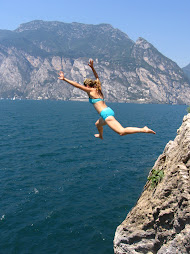 Chiloé is the biggest island of Chile´s archipelago that stretches south. We took an overnight bus there from Santiago with plans to spend only a few days, but we got really drawn into the folklore, legend, and wooden architecture that makes the island so famous. We also found a wonderful Spanish teacher in Ancud, who taught us much more than just the language.
Chiloé is the biggest island of Chile´s archipelago that stretches south. We took an overnight bus there from Santiago with plans to spend only a few days, but we got really drawn into the folklore, legend, and wooden architecture that makes the island so famous. We also found a wonderful Spanish teacher in Ancud, who taught us much more than just the language. Fishing is a thriving industry on Chiloé, and wooden boats are still made mostly by hand, with the boards bent by steam generated by a small fire. Divers with air tubes attached to a generator on a boat go down to more than 30meters to collect the fresh shellfish that is in the market.
Fishing is a thriving industry on Chiloé, and wooden boats are still made mostly by hand, with the boards bent by steam generated by a small fire. Divers with air tubes attached to a generator on a boat go down to more than 30meters to collect the fresh shellfish that is in the market. Our spanish teachers´daughter and neice made us a delicious meal of five different kinds.
Our spanish teachers´daughter and neice made us a delicious meal of five different kinds. We also went out for lunch with them to try the island´s traditional dish of Curanto - a plate of boiled pork, chicken, sausage, potato patties and shellfish. It actually tasted a lot better than it looked, but you should have seen Nelson and I´s faces when all these grey lumps arrived on our plates - there was visible gulping and eye bulging. I was already only eating a meat dish to be polite, and it was definitely a bit of a stretch for me.
Nelson really wants me to tell you all about how the odds are really stacked against me as a world traveller. First, I don´t really like to eat meat. Then, there are also lots of veggies I don´t like - tomatoes, peppers, avocado, olives, etc. but I need to eat regularly or I get really tired and grumpy. I also get pretty carsick if I don´t sit up front and look out the window, am allergic to pollen, dust, perfume and some animals, have a bad back, sore hip and bunk knee, and really like to have a hot shower every day. Yup, pretty intrepid, hey?
 We also learned about how they make their traditional apple drink - by whacking the apples with a big stick until the juice pours out, then further squeezing the apple rinds with a big screw press.
We also learned about how they make their traditional apple drink - by whacking the apples with a big stick until the juice pours out, then further squeezing the apple rinds with a big screw press. We also learned about the legends of Chiloé, such as that of Trauco, the little ugly man that lives in the forest and seduces women with his magic powers. If a woman gets pregnant with no father of the baby in sight, it is perfectly acceptable to say that Trauco did it. And then there is the beautiful mermaid, Pincoya, who seduces men. You can tell that men make up the legends.
We also learned about the legends of Chiloé, such as that of Trauco, the little ugly man that lives in the forest and seduces women with his magic powers. If a woman gets pregnant with no father of the baby in sight, it is perfectly acceptable to say that Trauco did it. And then there is the beautiful mermaid, Pincoya, who seduces men. You can tell that men make up the legends. We also went to the circus - the Circo del Oro - and Nelson ended up on stage with a bell tied around his waist, shaking his bum at the crowd. I don´t have pictures of that, but I do have lots of video...
We also went to the circus - the Circo del Oro - and Nelson ended up on stage with a bell tied around his waist, shaking his bum at the crowd. I don´t have pictures of that, but I do have lots of video... Chiloé is most famous for its wooden churches, built by missionaries in the 18th century.
Chiloé is most famous for its wooden churches, built by missionaries in the 18th century. Scattered around the island and on lots of little islands, they really are an architectural feat.
Scattered around the island and on lots of little islands, they really are an architectural feat.
We also just happened to be in Castro when an international architecture conference was taking place, so we sat in on a few seminars.
The colourful wooden shingles of the houses all over the island also add to the magical feel of the island.





We tried to get a boat off the south end of the island to the mainland, but everything was full for more than a week. We even tried just going anyways to the dock when the boat was leaving in hopes of a cancellation but knew it wasn´t going to work when the woman behind the desk uttered the two words that are to a possibilist what kryptonite is to Superman: "it´s impossible!".
All the busses were full, too, so we took matters into our own hands and stuck out our thumbs - we got all the way back up off the island to Puerto Montt that day.



No comments:
Post a Comment